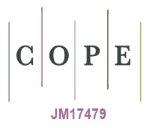Simulating and Modeling the Extensive Air Showers Development through the Estimating the Energy of some Created Particles
DOI:
https://doi.org/10.23851/mjs.v33i3.1137Keywords:
EAS, energy of created particle, AIRES, created particlesAbstract
Using the AIRES code and three hadronic interaction models, a simulation study of the energy of created particles due to the development of an extensive air shower was carried out (EPOS-LHC, QGSJET-II-04, and Sibyll2.3c). The main focus is put on the energy of the create particles as a function of depth for (12C,56Fe, p, and 28Si) primary particles with high primary energies (1017,1018,1019, and 1020) eV with two zenith angles 0° and 30°. The New parameters were obtained by fitting the energy of created particles curves using Gaussian and linear functions for created particles, initiated by primary particles at the energy 1020 eV. Good agreement was obtained by comparing the present results with results simulated by CORSIKA simulation for primary proton at the energy 1019 eV
Downloads
References
R.M. Baltrusaitis et al. The Utah Fly's Eye detector, Nucl. Instr. Meth. Volume 240, Issue 2, pp. 410-428, (1985).
J. Knapp et al, Extensive Air Shower Simulations at the Highest Energies Astropart.Phys. 19,pp. 77-99 (2003).
T.K. Gaisser, Cosmic Rays and Particle Physics, Cambridge University Press, Cambridge (1990).
T. Pierog, Iu. Karpenko, et al., EPOS LHC: test of collective hadronization with LHC data, Phys. Rev. C. 92, 034906(2015).
S. Ostapchenko., Monte Carlo treatment of hadronic interactions in enhanced Pomeron scheme: I. QGSJET-II model, Phys. Rev. D. 83, 014018 (2011).
E. Ahn, R.Engel,, et al., Cosmic ray interaction event generator Sibyll 2.1, Phys. Rev. D 80, 094003 (2009).
D. Heck, J. Knapp, J.N. Capdevielle, G. Schatz, and T. Thouw, FZKA 6019, Forschungszentrum Karlsruhe (1998).
J. Knapp, D. Heck, et al, Extensive Air Shower Simulations at the Highest Energies, Astropart. Phys. Astropart.Phys. 19,pp. 77-99,(2003).
M. Risse and D. Heck, Energy Release in Air Showers, Astropart. Phys. 20 - 661, (2004).
S. Sciutto, AIRES: a system for air shower simulations. User's guide and reference manual. Version 2.2. 0, in, 1999.
T. Antoni et al, KASCADE measurements of energy spectra for elemental groups of cosmic rays: Results and open problems, stropart.Phys.24:1-25, (2005).
A. Haungs, H. Rebel1, et al, Energy spectrum and mass composition of high-energy cosmic rays, Rep. Prog. Phys. 66, pp. 1145-1206, (2003).
K.H. Kampert, Measurements of the cosmic ray composition with air shower experiments, Astroparticle Physics, Volume 35, Issue 10, pp. 660-678(2012).
S.Y. Roh, et al, A comparison study of CORSIKA and COSMOS simulations for extensive air showers, Astroparticle Physics, Vol. 44, pp. 1-8, (2013).
Downloads
Key Dates
Published
Issue
Section
License
Copyright (c) 2022 Al-Mustansiriyah Journal of Science

This work is licensed under a Creative Commons Attribution-NonCommercial 4.0 International License.
(Starting May 5, 2024) Authors retain copyright and grant the journal right of first publication with the work simultaneously licensed under a Creative Commons Attribution (CC-BY) 4.0 License that allows others to share the work with an acknowledgement of the work’s authorship and initial publication in this journal.






















